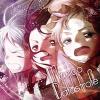Search the Community
Showing results for tags 'Franco-Crosti'.
Found 1 result
-
Greetings Train Tech, Here is my model of No. 2096, the first Franco-Crosti locomotive. The idea behind the Franco-Crosti boiler system was to use the exhaust gases from the locomotive to preheat the water, thereby recapturing some energy that would otherwise be lost and improving efficiency. Although the concept originated in Italy, No. 2096 was actually built in Tubize, Belgium in 1932. As you can see, it's absurdly large. The wheel arrangement is 0-6-2 + 2-4-2-4-2 + 2-6-0 (UIC: C1'+1'B1B1'+1'C). It's a quadruplex! This project initially began as a joking suggestion for a way to use up all my spare large drivers. I decided to do some preliminary scaling for fun, then downloaded LDD to try to do some mockups … the entire thing quickly spiraled out of control (I wound up buying new wheels, defeating the point of the original suggestion). The end result clocks in at 80 studs magnet-to-magnet, at roughly 1:48 scale (155mm/plate, or 15in/stud). I got all my reference information from here. As all the photos were black and white, I had to take my best guess with regards to the paint scheme; I wound up choosing the Belgian Railways livery used at the time (if my research is correct). I had been somewhat uncertain how well the green would turn out, but I'm quite pleased with the result. As a nice bonus, it matches 10015 Passenger Wagon quite nicely. 2096 is my first foray into Power Functions -powered locomotives. In the past, I've always pushed my steamers using some rolling stock with 9V motors, but I was worried about the stability of such a long locomotive when being pushed. Initially I had been planning to have the locomotive powered by four of the old 9V motors (one for each set of drivers), but quickly realized it was going to be too difficult to fit the motors, receiver, and wiring inside the locomotive. Luckily, I came across a good solution for mounting two PF Medium motors inside the center unit, so I switched to those (which also eliminated the need for PF converter cables). As was the prototype, the model is nearly rotationally symmetrical, and runs equally well in both directions. It drives through switches and any sort of curve arrangement, although I haven't yet tested against flex track… Full Brickshelf gallery here (once moderation finishes). Thanks for reading!
- 13 replies
-
- Franco-Crosti
- quadruplex
-
(and 1 more)
Tagged with:

